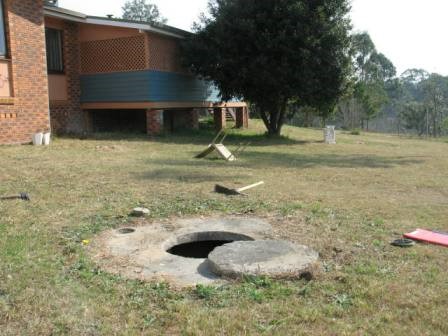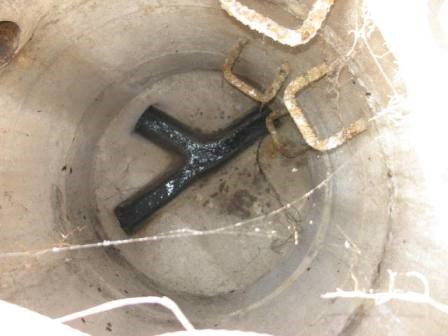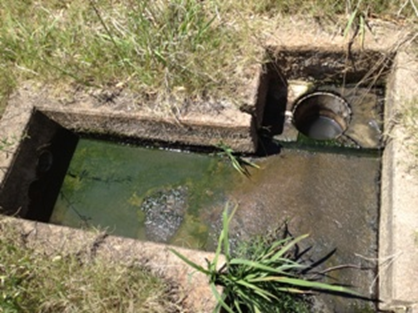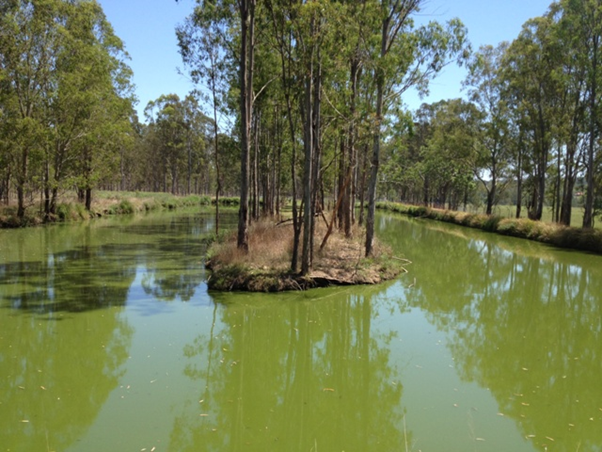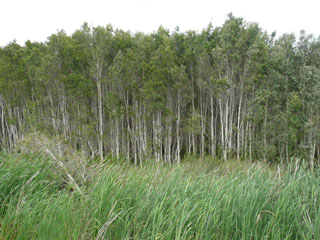Ecoteam manages the water resources at Jubullum Village, including the Drinking Water and Wastewater. This blog explains how wastewater treatment occurs and the Sewage Management processes involved. Part 1 of the blog (this blog) explains the primary treatment process for the sewage (from household to removal of solids). Part 2 of the blog (published here) – explains the secondary treatment process (treatment in constructed wetlands and irrigation onto an orchard).
Sewage water is often referred to as ‘Wastewater’. At Ecoteam we like to refer to it as Resource Water because once it is treated it can then be reused for irrigation. Reusing treated sewage water for irrigation helps to ease pressure on our finite Drinking Water Resources.
Derek Torrens, a well-respected indigenous community member, is part of Ecoteam and manages the operation and maintenance of the water resources for the village.
Jubullum Village consists of approx. 50 homes with a population of about 200 residents and is situated west of the township of Tabulam in Northern NSW at 28°53’38.71’’S 152°31’42.37’’E.
The Treatment Train
Septic tanks
Each house has a septic tank, the resource water flows from all household drains and toilets into the septic tank. A septic tank is a primary treatment vessel that removes solids (which sink to the bottom) and oils and grease (which float to the top) from the household resource water.
Collection mains and effluent sump
The water then flows in to the collection mains along the piping to an effluent sump that is located at the bottom of the village. The effluent sump is located at the lowest point to allow gravity to move the water to the sump, eliminating the need for pumps.
In the effluent sump there are two submersible pumps (the only 2 pumps in the entire system) that are controlled by floating switches. As the well fills, the floats rise until vertical, once vertical the float switch closes the electrical circuit and switches the pumps on. As the water in the well drops from pumping, the float switch floats down with the water and opens the electrical circuit which turns the pump off.
Grit channel and sedimentation basin
The resource water is pumped from the effluent sump out to the back (south) of the village where it flows into a grit channel and then into a sedimentation basin.
The grit channel and the sedimentation basin help to remove any solids that may be left in the resource water.
Oxidation Pond
The water then flows by gravity into an oxidation pond; the pond is long and skinny to reduce short circuiting of the flow of water. The pond is shaped like a horseshoe and the water must proceed from the entry point up the skinny channels and then flows into an outlet weir and then into a splitter box which splits the flow evenly to 2 manifolds which feed the 2 constructed wetlands.
It doesn’t stop here – here’s the link to Part 2. Keep reading to find out the final treatment processes for the Jubullum Village Sewage Management System.
By Aaron Taylor, Ecoteam.
For more information please contact Aaron Taylor our Senior Operations Manager (Water and Sewerage) here at Ecoteam. You can call the office on (02) 6621 5123 or email info@ecoteam.com.au if you have any questions for Aaron.
If you need help or advice on managing your On Site Sewage System, Ecoteam can help. We provide design and construction services, as well as condition assessments, system operation and maintenance for all sewage treatment systems – great and small.
And remember – your sewage is a resource!

